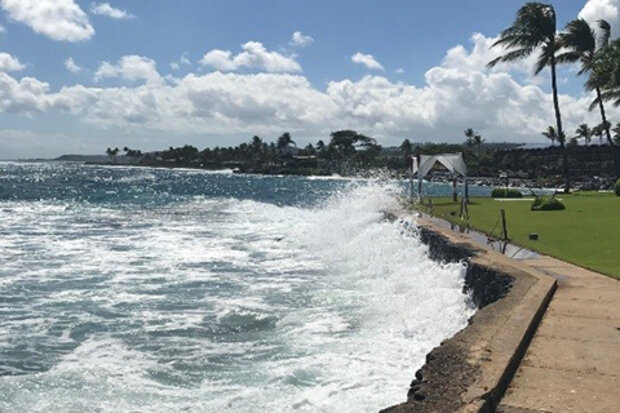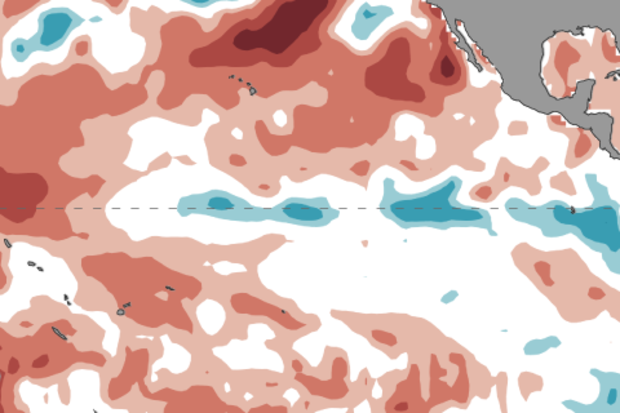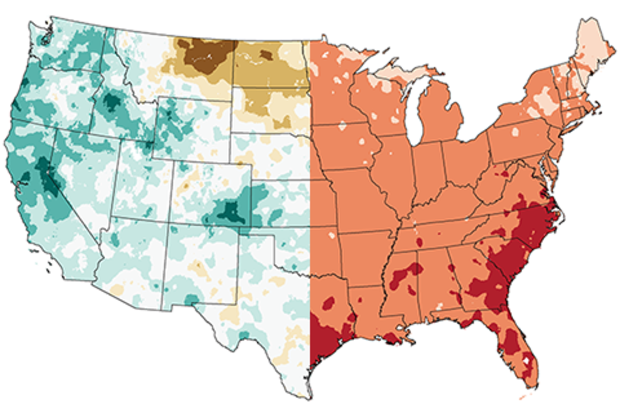Blogs
You may be thinking “There are even more things that forecasters look at when making seasonal forecasts?” or “Haven’t you already written about those other things, multiple times?” And the answer to both of those questions is yes. But what if I told you that there is another mysterious thing that, at least for seasonal temperature outlooks, gives forecasters a better idea of what will happen than predictions of ENSO or the Madden Julian Oscillation, or the Arctic Oscillation or the North Atlantic Oscillation or the Pacific Decadal Oscillation or…I think you get the point (1). And it’s much simpler than all of those. It’s called the trend.
Cool, another vaguely science sounding term. W…
Read article
The climate of the islands of Hawaii and the Pacific is often characterized by iconic scenes of warm, sandy beaches, blue skies, and swaying palm trees. However, these scenes can be dramatically transformed when sea levels become anomalously high or low, wave action increases due to nearby storms, and drought or heavy rains impact local food supplies. In other words, there can be climate trouble even in paradise.
Most regions of the United States fall within major land areas, and their weather and climate are well observed by ground-based stations. However, the tropical Pacific spans thousands of miles on end without land, and this geography makes it difficult to collect weath…
Read article
The September ENSO forecast is out!! (Can you tell I’m excited to be back on the top-of-the-month post?) Forecasters think there is an approximately 55-60% chance of La Niña this fall and winter, so we’re hoisting a La Niña Watch. Read on to find out what’s behind this development!
Summer summary
First, though, a quick recap of current conditions in the tropical Pacific Ocean. The sea surface temperature in our favorite Niño3.4 region in the central Pacific was about 0.1°C colder than the long-term average over June – August, smack-dab in the neutral range. The atmosphere also reflected neutral conditions during the summer, with the winds above the equatorial Pacific neither particular…
Read article
It’s been a tough few weeks weather and climate wise. Big events generate lots of questions, so this edition of Beyond the Data will address several I’ve heard recently, and several I asked myself.
Was Harvey’s rainfall really record-breaking?
It appears so, at least for the contiguous United States, from the perspective of “How much rain fell into a single official rain gauge over the course of a single tropical storm?” There is no official record for tropical cyclone, as far as the National Climate Extremes Committee has vetted, but the National Weather Service keeps an online resource listing peak rains for almost all named storms since 1950, and a few before that.
Comparing tota…
Read article
This year so far has been one of the warmest on record for the contiguous United States, with the January-July temperature ranking as the 2nd highest since records began in 1895. It has also been a wetter than average year (even before Hurricane Harvey), with the precipitation total for the first seven months of the year ranking as the seventh wettest in the 123-year record.
Temperature and precipitation ranks for 2017 to date
This warm-wet pattern is somewhat contrary to the general rule of thumb about how temperature and precipitation go together in the contiguous United States. It is typically the dry years that are unusually warm, while in the past, wet years were g…
Read article




